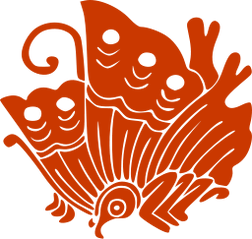
Taira clan (平氏 Hei-shi?) was a major Japanese clan of samurai, extremely skilled in the art of jujitsu in historical Japan.
In reference to Japanese history, along with Minamoto, Taira was a hereditary clan name bestowed by the emperors of the Heian period to certain ex-members of the imperial family when they became subjects. The Taira clan is often referred to as Heishi (平氏?, literally "Taira clan") or Heike (平家, literally "House of Taira"), using the character's Chinese reading hei.
Offshoots of the imperial dynasty, some grandsons of Emperor Kammu were first given the name Taira in 825 or later. Afterwards, descendants of Emperor Nimmyo, Emperor Montoku, and Emperor Koko were also given the surname. The specific hereditary lines from these emperors are referred to by the emperor's posthumous name followed by Heishi, i.e. Kammu Heishi.
The Taira were one of the four important clans that dominated Japanese politics during the Heian period (794–1185) – the others were the Fujiwara, the Tachibana and the Minamoto.
The Kammu Heishi line, founded in 889 by Taira no Takamochi (a great-grandson of the 50th Kammu tenno, reigned 781–806), proved to be the strongest and most dominant line during the late Heian period with Taira no Kiyomori eventually forming the first samurai-dominated government in the history of Japan. A great-grandson of Heishi Takamochi, Taira no Korihira, moved to Ise Province (now part of Mie Prefecture) and established a major daimyo dynasty. Masamori, his grandson; and Tadamori, great-grandson, became loyal supporters of the cloistered tennos Shirakawa and Toba, respectively. Taira no Kiyomori, son and heir of Tadamori, rose to the position of daijō daijin (great minister of state) following his victories in the Hōgen Disturbance (1156) and the Heiji Disturbance (1160). Kiyomori managed to enthrone his infant grandson as Emperor Antoku in 1180, an act which led to the Genpei War (1180–85), the Taira-Minamoto War. Kiyomori's sons, the last of the head family of the Kammu Heishi line, were eventually defeated by the 6 armies of Minamoto no Yoritomo at the Battle of Dan-no-ura, the last battle of the Genpei War. This story is told in the early Japanese epic, The Tale of the Heike (Heike Monogatari).
This Kammu Heishi had many branch families, including the Hōjō, Chiba, Miura, Tajiri and Hatakeyama.
Another Kammu Heishi: Takamune-ō (804–867), the eldest son of Kazurahara-Shinnō (786–853) and a grandson of Emperor Kammu, received the kabane of Taira no Ason in 825. Thus there were two Kammu Heishi families, one descended from Takamune and the other from his nephew, Takamochi (son of Prince Takami).
The Oda clan in the time of Oda Nobunaga (1534–1582) claimed descent from the Taira, by Taira no Chikazane, a grandson of Taira no Shigemori (1138–1179).
